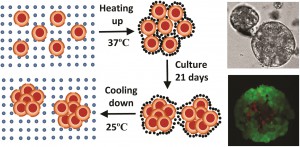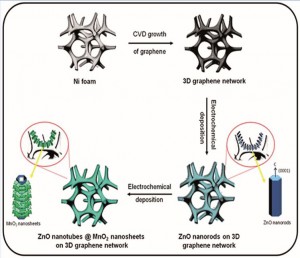We are delighted to highlight the Outstanding Reviewers for RSC Advances in 2017, as selected by the editorial team, for their significant contribution to the journal. The reviewers have been chosen from the reviewer panel based on the quantity, quality and timeliness of the reports completed over the last 12 months.
A big thank you to those individuals listed here as well as to all of the reviewers on the RSC Advances reviewer panel that have supported the journal.
Each Outstanding Reviewer will receive a certificate to give recognition for their significant contribution.
Mr Rok Borstnar, Laboratory for genotoxicity
Dr Nghia Truong, Phuoc Monash University, ORCID: 0000-0001-9900-2644
Dr Wujun Fu, Oak Ridge National Laboratory
Dr S. Girish Kumar, CMR University, ORCID: 0000-0001-9132-1202
Dr Nicholas Geitner, Duke University, ORCID: 0000-0003-4313-372X
Dr Emanuele Curotto, University of Arcadia, ORCID: 0000-0001-9119-3263
Dr Yoong Ahm Kim, Chonnam National University, ORCID: 0000-0003-4074-7515
Dr Paul Trippier, Texas Tech University
Dr Michele Ceotto, Universita’ degli Studi di Milano, ORCID: 0000-0002-8270-3409
Dr Chunping Yang, Hunan University, ORCID: 0000-0003-3987-2722
Dr Wei Li, Utah State University, ORCID: 0000-0003-2802-7443
Dr Mark Waterland, Massey University, ORCID: 0000-0002-8493-9407
Dr Leo Small, Sandia National Laboratories, ORCID: 0000-0003-0404-6287
Dr Marija Gizdavic-Nikolaidis, The University of Auckland, ORCID: 0000-0002-8076-8508
Dr Xin Liu, State Key Laboratory of Fine Chemicals, ORCID: 0000-0002-4422-4108
Dr Zhijie Ma, University of Colorado Boulder, ORCID: 0000-0002-0734-1903
Dr Juliano Bonacin, University of Campinas, ORCID: 0000-0001-9399-1031
Dr Daniela Giacomazza, Istituto di Biofisica, ORCID: 0000-0002-6667-0205
Dr Ekkehard Lindner, Universitat Tubingen
Professor Zhenghua Tang, South China University of Technology, ORCID: 0000-0003-0718-3164
Dr Weixia Zhang, Harvard University, ORCID: 0000-0002-5835-2020
Dr Sreekuttan Unni, Central Electrochemical Research Institute, ORCID: 0000-0002-0403-9186
Professor Christian Robl, Friedrich-Schiller-Universität Jena
Professor Stanislaw Slomkowski, Center of Molecular and Macromolecular Studies, ORCID: 0000-0003-1543-535X
Dr Rui Oliveira, Universidade do Minho, ORCID: 0000-0002-3989-8925
Dr Wan Basirun, University of Malaya, ORCID: 0000-0001-8050-6113
Dr Yang Zhang, Arizona State University
Dr Maria Timofeeva, Novosibirsk State Technichal University
Dr Luis Simon, University of Salamanca, ORCID: 0000-0002-3781-0803
Dr Tsinghai Wang, National Tsing Hua University, ORCID: 0000-0003-4629-2005
Dr Thomas Mayer-Gall, Deutsches Textilforschungszentrum Nord-West, ORCID: 0000-0002-2822-6461
Dr Guowei Zhou Qilu, University of Technology
Dr Xiehong Cao, Nanyang Technological University, ORCID: 0000-0002-3004-7518
Dr Quanjun Xiang, University of Electronic Science and Technology of China, ORCID: 0000-0002-4486-7429
Dr Miklós Kubinyi, Budapest University of Technology and Economics, ORCID: 0000-0002-6343-0820
Dr Hu Li, Guizhou University, ORCID: 0000-0003-3604-9271
Dr Xuefeng Guo, Nanjing University, ORCID: 0000-0002-5492-5899
Dr Ahmad Zoolfakar, Universiti Teknologi MARA
Dr Bogdan-Marian Tofanica, Technical University of Iasi, ORCID: 0000-0002-4975-4650
Dr Zhiwei Xu, Tianjin Polytechnic University, ORCID: 0000-0003-1308-8884
Dr Tamás Vidóczy, Institute of Structuraél Chemistry
Dr Marinos Pitsikalis, University of Athens, ORCID: 0000-0002-7836-4862
Dr Haibo Shu, China Jiliang University, ORCID: 0000-0003-1728-2190
Dr Lin Zhang, Auburn University
Dr Ignacio Alfonso, Instituto de Química Avanzada de Cataluña, ORCID: 0000-0003-0678-0362
Dr Igor Komarov, Taras Shevchenko National University of Kyiv, ORCID: 0000-0002-7908-9145
Dr Xiao-Yu Hu, Nanjing University, ORCID: 0000-0002-9634-315X
Dr Zhe Wang, National Institutes of Health
Dr Muhammad Hossain, Yeungnam University, ORCID: 0000-0002-3428-8271
Dr Vaibhav Mehta, Marwadi University, ORCID: 0000-0003-4426-3374
Thank you to the RSC Advances board and our community for their continued support of the journal, as authors, reviewers and readers.
If you would like to become a reviewer for our journal, just email us with details of your research interests and an up-to-date CV or résumé. You can find more details in our author and reviewer resource centre
Follow us on Twitter to keep informed!


















